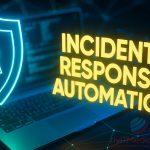Protecting sensitive business data is more critical than ever. Whether you’re securing customer payment details, employee records, or proprietary information, two technologies dominate the conversation: tokenization and encryption. But which one is right for your business?
Let’s explore how they work, their differences, and which method best fits your organization’s security strategy.
Protect Your Business’ Cybersecurity Now!
Protect your business from evolving cyber threats with our tailored cybersecurity solutions designed for companies of all sizes. From malware and phishing to ransomware protection, our multi-license packages ensure comprehensive security across all devices, keeping your sensitive data safe and your operations running smoothly. With advanced features like real-time threat monitoring, endpoint security, and secure data encryption, you can focus on growth while we handle your digital protection. **Request a free quote today** for affordable, scalable solutions and ensure your business stays secure and compliant. Don’t wait—get protected before threats strike!
What is Encryption?
Encryption is a process that converts readable data (plaintext) into an unreadable format (ciphertext) using an algorithm and an encryption key. Only those with the correct decryption key can revert the data back to its original form.
Common Business Use Cases:
- Securing files in cloud storage
- Protecting emails and communications
- Encrypting databases and backup systems
Pros:
- Strong security when using robust algorithms
- Widely used and supported
- Effective for protecting data at rest and in transit
Cons:
- Encrypted data can still be exposed if keys are stolen
- Decryption is required for processing, which can create vulnerabilities
What is Tokenization?
Tokenization replaces sensitive data with a non-sensitive equivalent called a “token.” Unlike encryption, tokens have no mathematical relationship to the original data, making them useless if breached.
The original data is stored securely in a token vault, accessible only to authorized systems.
Common Business Use Cases:
- Securing payment card information (PCI DSS compliance)
- Protecting personally identifiable information (PII)
- Cloud applications where sensitive data shouldn’t be stored on-premise
Pros:
- Reduced risk of data breach exposure
- Easier compliance with regulations (e.g., PCI DSS, GDPR)
- Tokens can’t be reversed without access to the token vault
Cons:
- Requires a tokenization system or service provider
- Less flexible for data analytics or processing without detokenization
Tokenization vs Encryption: Key Differences
| Feature | Tokenization | Encryption |
|---|---|---|
| Data Transformation | Replaces with unrelated token | Converts using algorithm |
| Reversibility | Not mathematically reversible | Reversible with key |
| Security Model | No mathematical link to data | Linked via encryption key |
| Data Utility | Limited without detokenization | Readable after decryption |
| Regulatory Compliance | Easier for PCI, GDPR | Also helps, but complex key management |
| Ideal Use Case | Payment info, PII | Communications, storage, system security |
When to Use Tokenization in Your Business
Tokenization is ideal when:
- You’re handling credit card data (PCI DSS).
- You need to limit internal access to sensitive data.
- Your team requires simplified compliance processes.
Example: A retail business using tokenization to store customer card details without risk if their system is breached.
When to Use Encryption in Your Business
Encryption is a better fit when:
- You need to protect large datasets or systems.
- Data must remain searchable or analyzable.
- You’re securing communications or backups.
Example: A legal firm encrypts all email communications and cloud-stored case files to protect client confidentiality.
Why Businesses May Need Both
In many cases, businesses benefit from combining tokenization and encryption:
- Encrypt entire storage systems while using tokenization for specific sensitive fields (like SSNs or credit card numbers).
- Use encryption for internal analytics and tokenization for customer-facing applications.
This layered approach enhances security and compliance without compromising operational efficiency.
Bonus: Secure Your Endpoints with SpyHunter’s Multi-License Protection
Even with tokenization or encryption, your endpoints (devices, servers) remain vulnerable to malware and ransomware. SpyHunter’s Multi-License Anti-Malware software offers a powerful solution for businesses looking to protect multiple systems efficiently.
👉 Get SpyHunter’s Multi-License Protection Here – perfect for small to mid-sized teams needing reliable malware defense across several devices.
Conclusion: Making the Right Data Security Decision
Choosing between tokenization vs encryption depends on your business’s data types, compliance needs, and operational goals. For most organizations, a hybrid approach using both methods offers the best protection.
Whatever method you choose, ensure it’s part of a broader cybersecurity strategy—one that includes malware protection, employee training, and incident response planning.
Take action today: Review your current data security methods and consider upgrading with tools like SpyHunter’s multi-license protection to fortify your business against modern threats.
Protect Your Business’ Cybersecurity Now!
Protect your business from evolving cyber threats with our tailored cybersecurity solutions designed for companies of all sizes. From malware and phishing to ransomware protection, our multi-license packages ensure comprehensive security across all devices, keeping your sensitive data safe and your operations running smoothly. With advanced features like real-time threat monitoring, endpoint security, and secure data encryption, you can focus on growth while we handle your digital protection. **Request a free quote today** for affordable, scalable solutions and ensure your business stays secure and compliant. Don’t wait—get protected before threats strike!




